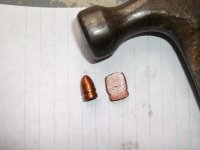Jeff423
US Veteran
My coated bullet supplier says to seat and crimp in two steps so as to not scar the coating.
I'm going to be loading some coated .41 mag bullets with a roll crimp on my single stage and wonder if this is really a problem. I don't want to add another step if I don't have to.
I've been shooting coated bullets for a while but have been loading them on a progressive that seats and crimps in two steps.
I'm going to be loading some coated .41 mag bullets with a roll crimp on my single stage and wonder if this is really a problem. I don't want to add another step if I don't have to.
I've been shooting coated bullets for a while but have been loading them on a progressive that seats and crimps in two steps.

